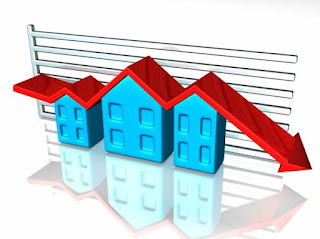For first-time home buyers, it can feel intimidating when you want to try and buy a home. Beyond the work of seeing houses and facing competition in the market, you also simply need to have enough money saved to cover your down payment. Many first-time buyers are younger and haven't had as much time to save or reach their high-earning years in their careers, making even a minimum down payment feel out of reach.
Making enough money for a home will never be easy, but luckily there are some programs to help make it at least a little bit easier for first-time home buyers. One popular program is the Home Buyers’ Plan (HBP), which allows buyers to collect tax savings using their Registered Retirement Savings Plan (RRSP) to fund a home purchase.
The HBP is undoubtedly not a bad option, and many Canadians have used it to help buy their first home. However, it may not be for everyone. You need to be aware of some downsides before you withdraw money from your RRSP to buy a house.
In this article, we will explore funding a home purchase with your RRSP, how it works, and look at some of the advantages and disadvantages of using the Home Buyers’ Plan to buy your first house.
What is an RRSP?
Before you can understand the Home Buyers’ Plan, you need to know how your RRSP works. Hopefully, if you have been contributing to your RRSP, you already know this, but maybe you haven't begun using an RRSP yet or need a refresher.
In brief, your Registered Retirement Savings Plan (RRSP) is a tax-deferred retirement savings account, so any RRSP contributions you make for the year are deducted from what you owe on taxes. An RRSP is not truly tax-free, as you will need to pay taxes when it comes time to withdraw the money you have saved.
You also will not be taxed on any capital gains made within the account, such as through investments, as long as the gains remain within the account. The idea is to help Canadians save money while they are in their prime earning years while also getting a tax break and then withdraw it in retirement when your marginal tax rate is lower.
As long as your RRSP isn’t locked-in, you can still withdraw the money whenever you want, but you will simply need to pay taxes on the amount like any other income. You will also lose any contribution room used when you put the money into the account.
RRSPs are one of Canada's most popular registered accounts, so many people have a lot of money saved within one. If you are many years from retirement, it can be tempting to dip into a bit of that money, especially if you want to buy a house. Luckily, the CRA provides you with an option to do just that.
What is the RRSP Home Buyers’ Plan?
The Home Buyer's Plan is a federal program designed to help Canadians buy their first home with funds from their RRSP. Under the home buyers plan, you can use money from your RRSP while still enjoying the tax savings. However, there are some significant limitations to this option.
How much you can withdraw
First, your withdrawal under the home buyer's plan is limited to $35,000 per buyer. Your spouse may also withdraw that amount for the same home purchase, allowing you up to $70,000 for your down payment. You also need to have saved that money in the first place unless you choose to go with an RRSP loan.
The amount you withdraw does not incur any taxes and can be put toward a home purchase. When withdrawing money through your Home Buyers’ plan, you will need to provide your financial institution with a T1036 form indicating the purpose of the withdrawal. Otherwise, it may not count towards your HBP loan, and you may end up paying tax on the money you take out.
Repayment rules
Using the home buyers plan, you have 15 years to pay back the amount, with a one-year grace period before repayment starts. You will not need to pay interest, and because the value of the loan and the repayment period are fixed, you will have the same yearly payment for the entire 15 years. If you withdrew the maximum amount under the home buyers plan, you would pay about $2,333 per year for 15 years or around $194 per month on top of your mortgage.
Paying your Home Buyers plan loan will not affect your RRSP contribution limit, as the money has already technically been contributed. This means you can still contribute your yearly amount on top of your loan repayment. However, any amount you repay on the loan is not deductible, as you already saved the tax on those dollars when you first contributed them to your RRSP.
The penalty for missed repayment on a Home Buyers plan loan is not very severe. When you fail to make a payment towards your Home Buyers plan loan, the missed payment amount will simply be treated as any other withdrawal from an RRSP and will be counted as taxable income for the year. Your principal still goes down, and you will simply owe more come tax season.
Also, be sure to designate any repayments as such, or you risk the Canada revenue agency counting it as a regular contribution. This can lead to you missing your payment and potentially exceeding your contribution limit.
Who is qualified for the Home Buyers’ plan?
To take advantage of the Home Buyers’ Plan, you must meet some qualifying criteria. First and most obviously, you will need to be a first-time home buyer, meaning you or your spouse have not owned a home in the last four years.
You will need to be a Canadian citizen or permanent resident, and you will need to withdraw funds all at once or in multiple installments within a single calendar year. You must use the money for a home purchase, so you can't spend it on just whatever you want. The funds you withdraw must also be in your RRSP account for 90 days prior to withdrawal, which will be essential to know if you are borrowing or being gifted money into your RRSP.
You must also occupy the home you plan to buy, so you can't use the Home Buyers Plan to buy an investment property you won't live in.
Advantages of using the Home Buyers Plan
There are clear advantages to using the Home Buyer's Plan to buy a home.
For one, it allows you to save income tax on a significant amount of your down payment, which can mean a lot of extra money in your pocket. It is also an interest-free loan, meaning the amount you borrow is the amount you will pay without any added costs. Finally, you have a long time to pay it back, meaning not only is the financial impact spread out, but you also still get to have that money in your RRSP when it comes time to retire.
Disadvantages to using the Home Buyers Plan
Savings required
One of the biggest issues with using the Home Buyer's Plan is that it requires a significant amount of savings to be most beneficial. Those with an extra $35,000 saved can make the most of the Home Buyers’ Plan. The higher your income, the more you can save, and your income tax rate will be higher, making the HBP's advantages even greater. However, for those who make less and save less, the benefits of the Home Buyers’ Plan will be reduced.
Long term loan
The Home Buyers’ Plan repayment is fixed at 15 years, meaning you commit yourself to a long-term loan repayment schedule. This means 15 years of increased home costs and 15 years when you could potentially miss your repayment and be charged taxes.
This may also be a problem if you plan to retire and use your RRSP within 15 years. The one upside is that you can prepay early for no penalty.
Missing out on RRSP income
Saving into your RRSP is one thing, but making the most of it is another. Many people choose to invest in their RRSP. When it comes to investing, it's always best to have as much as possible as early as possible to take advantage of compound interest. Though retirement may seem far away, the number of years until you retire are limited, and every year counts in investment growth.
By taking $35,000 out of your RRSP, you miss out on the potential growth of that money if it were invested. Though it will be back in your account after 15 years, that's 15 years you missed out on investment growth. On the other hand, this money is technically being invested in your home, so you may still see some returns. This is not necessarily a downside, but you must consider where your money is best spent based on your expected investment returns and personal goals.
Repaying your Home Buyer's Plan loan may also limit your ability to continue contributing to your RRSP further, leading to years of playing catch up. In this case, you would also be missing out on the tax benefits of the RRSP for future years.
Is it right for me?
Though there are downsides to using the Home Buyer’s Plan to borrow from your RRSP, they are far from deal-breakers. The Home Buyers plan will not be for everyone, but it is an excellent option for some. The person who will get the most out of the home buyers plan is anyone with a large amount of savings already in their RRSP and who makes a significant income.
This means that you will be able to withdraw the maximum amount and benefit most from the tax savings of having contributed. In addition, a high income will help with repayment and allow you to contribute at the same time, allowing you to continue making tax deductions.
As your savings amount and income go down, so does the feasibility of the Home Buyers’ Plan. However, it may still be a good idea if you expect your income to increase in the coming years. You can save the taxes now, and your loan will become even easier to service over time, meaning there are few downsides if you keep on top of your payment schedule.
Suppose you are deciding between using the Home Buyers’ Plan or withdrawing directly from your RRSP and paying the tax. In that case, it will be in your best interest to use the HBP as you can retain the contribution room by repaying the plan, which is not an option with a straight withdrawal.
If you are considering using the Home Buyers’ Plan for your first home purchase, consider talking to a tax professional or financial advisor. They can offer you a more in-depth understanding of how the program can benefit your particular financial situation.
Are you looking to buy or sell property? If you’d like, we can have a real estate expert show you the most efficient process that saves you thousands of dollars, a lot of time, with little or no inconvenience to you. Contact us today!










